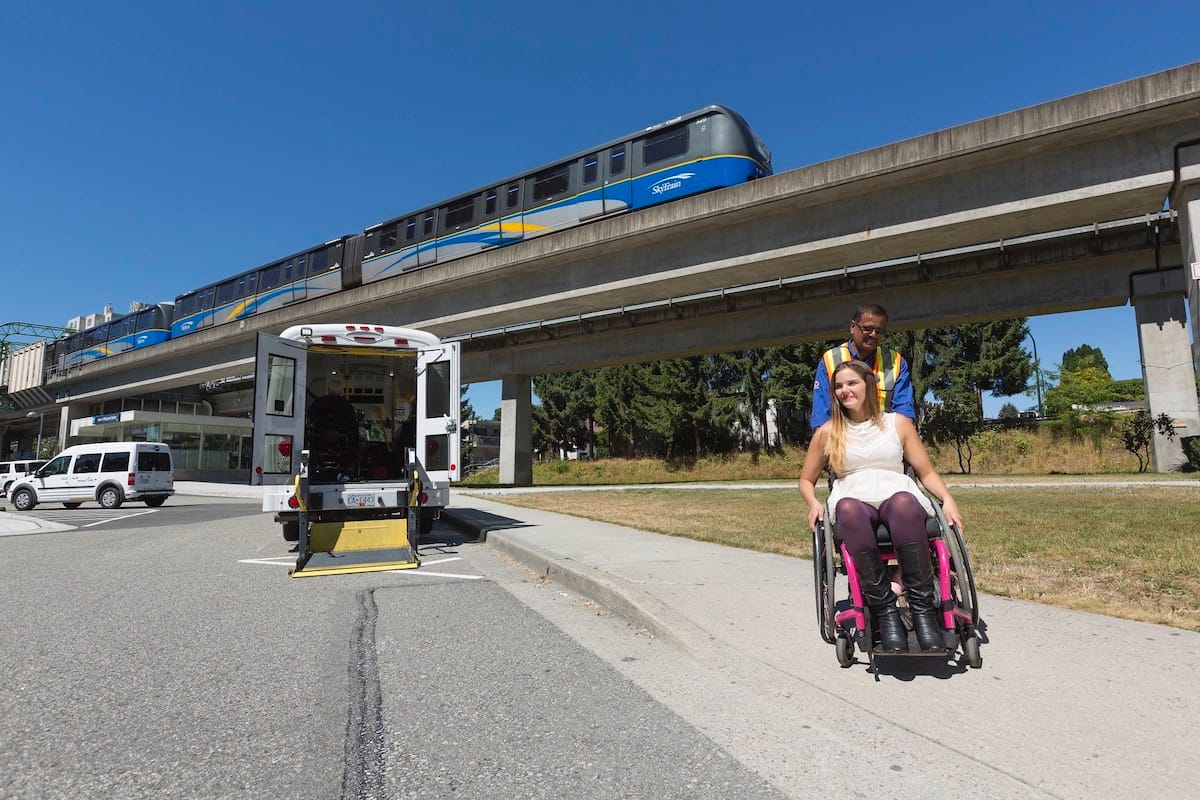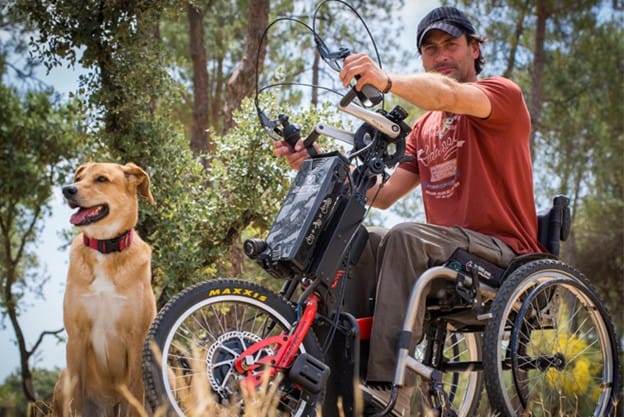
In the past three decades, our province has consistently been a leader in paving the way towards a more accessible transportation system.
These changes wouldn’t have been made if it hadn’t been for the advocacy work done by organizations like the BC Coalition of People with Disabilities, the Committee for Promotion of Accessible Convention Transit (ComPACT), the Social Planning and Research Council of BC (SPARC BC) and of course SCI BC’s former self, the BC Paraplegic Association (BCPA).
Thanks to the help of these and many other groups, leaders, volunteers and organizers whose names may never make shine in the spotlight, we’ve achieved many victories both big and small in the realm of accessible transportation.
The battle hasn’t been won yet–TransLink is currently in the midst of laying off HandyDART drivers–but here’s a brief history of our many milestones in advocating for more accessible transportation over the past three decades.
1980 B.C. inaugurates the HandyDART service, becoming the first province to offer such a service province-wide.
1983 The Vancouver Taxi Company becomes the first cab company providing wheelchair accessible taxis. Tim Louis, a city councilor and lawyer who uses a wheelchair, plays a big role in getting accessible cabs on the streets.
1986 The SkyTrain is launched. “They were going to ban people with wheelchairs during rush hour and they were going to build it with a four inch lift to prevent people in wheelchairs from accessing the SkyTrain,” says Jill Weiss. Thanks to several disability advocates, that never happened. Instead, the SkyTrain becomes the first accessible vehicle in Metro Vancouver’s public transit system aside from HandyDart buses.
1989 BC Transit (TransLink’s predecessor) decides to purchase exclusively accessible vehicles with either low floors or high floors with lifts.
1990 Metro Vancouver’s first 86 lift-equipped buses hit the road.
1996 Following a report indicating that 3.2 per cent of Greater Vancouver’s population is “transportation disabled” (higher than the national average of 2.7 per cent) and 10 per cent of the population is “mobility or agility disabled”, TransLink commits to purchasing only low-floor buses.
2001 The Vancouver Taxi Association works with the city of Vancouver to mandate that 15 per cent of all taxi fleets be accessible.
2005 TransLink starts the Access Transit Project, “one of the most extensive reviews of transit accessibility undertaken in North America,” says TransLink.
2008 TransLink’s fleet—including all buses, the SkyTrain, the West Coast Express and the Sea Bus—becomes one of the first fully accessible fleets in North America.
2012 TransLink reconsiders a decision to cut the TaxiSaver program thanks to a mass mobilization of seniors and people with disabilities.
Make BC even more accessible!
1. Join Access Transit’s User Advisory Committee
“The Access Transit Users’ Advisory Committee (UAC) was formed as a response to transit users comments in the Access Transit consultation process. The Committee ensures that the Access Transit Strategy is implemented and provides ongoing advice on all TransLink plans, programs and initiatives, making sure that accessibility issues are always considered.
The Committee meets once every two months to discuss matters relating to the accessibility of our transportation system.”
 Get to know Metro Vancouver’s public transit system with SCI BC’s annual Bus Stop Hop (BSH) on August 17th. Inspired by the Amazing Race, the BSH is a one-day, team-based event that has participants racing across the city, using accessible transportation, completing fun activities and collecting points.
Get to know Metro Vancouver’s public transit system with SCI BC’s annual Bus Stop Hop (BSH) on August 17th. Inspired by the Amazing Race, the BSH is a one-day, team-based event that has participants racing across the city, using accessible transportation, completing fun activities and collecting points.
What makes BSH unique is its focus on accessible transit and its team structure: four teammates consisting of two able-bodied people and two people using wheelchairs or mobility aids. Race across the city using public transit, compete to win great prizes and party with SCI BC staff, peers and volunteers over an evening BBQ. For more information and to register click here.
3. Share your thoughts and photos!
Did we miss any milestones? Tell us your thoughts on the comments section of this blog, pipe in on our Facebook page or chat with us on Twitter. We’re all ears.
Together, we can make our province even more accessible.
4. Read the rest of our Accessible Transportation Series
- Lessons Learned From the TaxiSaver Debate
- Just how accessible is Vancouver’s public transit system, really?
The Access Transit Users’ Advisory Committee (UAC) was formed as a response to transit users comments in the Access Transit consultation process. The Committee ensures that the Access Transit Strategy is implemented and provides ongoing advice on all TransLink plans, programs and initiatives, making sure that accessibility issues are always considered.
Committee members promote accessibility awareness and work toward solving accessibility issues through creative, open-minded and inclusive thinking.
The Committee meets once every two months to discuss matters relating to the accessibility of our transportation system. TransLink is committed to achieving a Vision for Accessible Transit through the support of the UAC.



